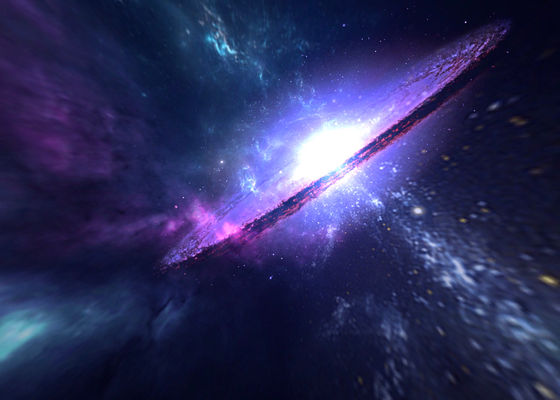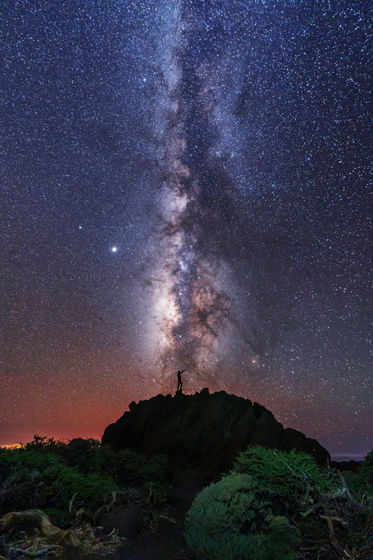Research results show that dark energy, which makes up 70% of the universe, does not exist, experts say 'if true, this would overturn our common sense of the universe'

It is known that the expansion of the universe, which began with the Big Bang, is accelerating rather than slowing down, and the mysterious energy that is accelerating the expansion of the universe is called 'dark energy'. Despite being explored by scientists for many years, the true nature of this dark energy has not been understood, but research results have been announced that support the theory that it does not actually exist. This is considered to be a discovery that could completely overturn the current cosmology, which says that the universe is the same everywhere and that there are no special places.
Supernovae evidence for foundational change to cosmological models | Monthly Notices of the Royal Astronomical Society: Letters | Oxford Academic
https://academic.oup.com/mnrasl/article/537/1/L55/7926647
Huge if true – dark energy doesn't exist, claims new study on supernovas
https://theconversation.com/huge-if-true-dark-energy-doesnt-exist-claims-new-study-on-supernovas-246674
The core of modern cosmology is a model called the ' Λ-CDM model .'
This model combines dark energy, represented by the cosmological constant Λ (lambda), with low-energy 'cold dark matter' (CDM). In this model, the universe is said to be made up of 68.3% dark energy, 26.8% dark matter, and 4.9% ordinary matter.
The Λ-CDM model has been supported as the standard cosmological model for a quarter century, but it faces several challenges, including a new study analyzing the results of observations by the state-of-the-art Dark Energy Spectroscopy Instrument (DESI) that suggests that dark energy, which was thought to be immutable, may be weakening over time. There are also views that Einstein's theory of general relativity, which is an important foundation of the Λ-CDM model, may be incomplete in the first place.
Research shows that dark energy is 'evolving,' a discovery that could determine predictions about the 'end of the universe' - GIGAZINE

One alternative model that has been attracting attention due to these issues is the timescape cosmological model. The big difference between this theory and current cosmology is whether or not it assumes that the universe will remain the same forever.
The universe is made up of matter, dark matter, and other matter that is not distributed thinly throughout the universe, but is densely packed into galaxies and clusters of galaxies. However, the universe is so vast that such variations are insignificant on a cosmic scale, and matter is generally thought to be uniformly distributed.
This homogeneity and isotropy of the universe is called the cosmological principle , and the Λ-CDM model is also based on this principle.
In contrast, the timescape model considers a non-uniform distribution of matter, and in this model, the expansion of the universe may be directly influenced by large-scale structures such as filaments .

In the timescape model, the '
In other words, the timescape model suggests that 'the expansion of the universe may only appear to be accelerating around us.'
In a paper published in the Monthly Notices of the Royal Astronomical Society in December 2024, the authors analyzed a data set of Type Ia supernovae called 'Pantheon Plus.' Type Ia supernovae are important objects for calculating the expansion rate of the universe because they are bright, can be observed from far away, and have a nearly constant luminosity at their peak.
Using this data, the research team compared the Λ-CDM model with the timescape model and found that the timescape model was able to better explain the observational record of nearby supernovae. However, this was purely statistical, and more accurately, the team said that 'statistical analysis showed a 'very strong' advantage.'
Even when examining distant supernovae, which should appear more evenly distributed, the timescape model performed slightly better than the standard model.
The results of this study suggest that the timescape model, which assumes that cosmic clumps and voids affect observations from Earth, may more accurately capture the true nature of the expansion of the universe. In particular, there are many voids and filaments close to Earth, which may have a significant impact on the changes in the universe as seen by humans.

There are some caveats to this study, including that the analysis doesn't take into account peculiar velocities (small, random motions in galaxies that can affect supernova measurements) or Malmquist bias (a bias that tends to result in brighter supernovae being included in datasets because they're easier to detect).
In addition, the Λ-CDM model is supported by various data accumulated over the years, such as baryon acoustic oscillations and gravitational lensing effects , so the timescape model must also clear these.
Pointing out these points, Rossana Ruggieri, a cosmologist at the University of Queensland, who contributed an explanatory article to the academic website The Conversation, said, 'The new research suggests that the timescape model offers an interesting alternative to the Λ-CDM model. In short, the accelerated expansion of the universe is an illusion caused by an uneven distribution of matter and a faster expansion rate of voids than denser matter regions. If confirmed, this would be a revolutionary paradigm shift in cosmology.'
Related Posts:
in Science, , Posted by log1l_ks






